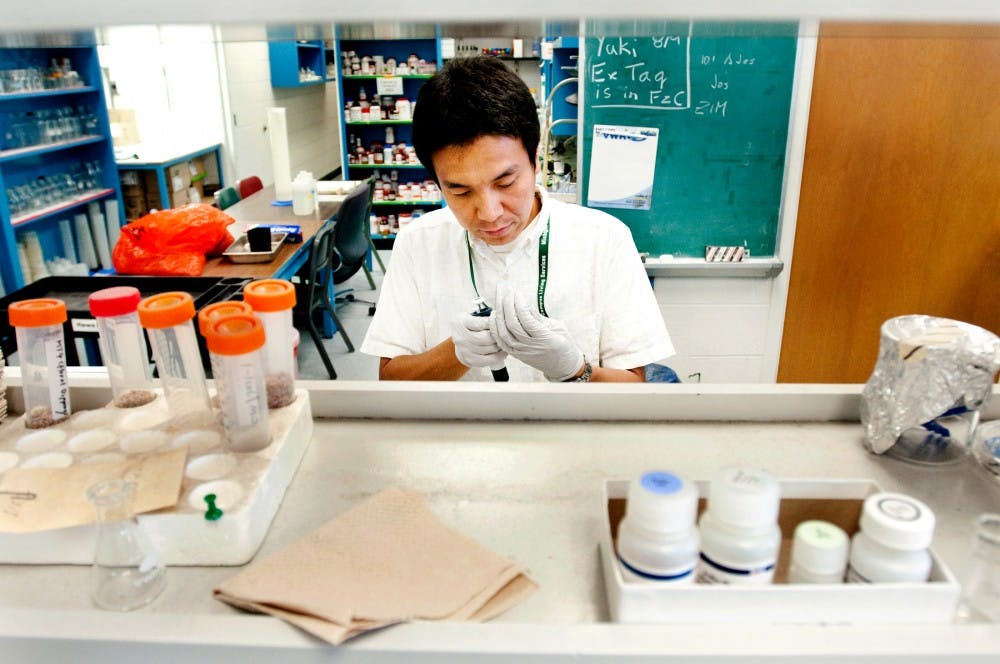When a 9.0-magnitude earthquake rocked the Miyagi Prefecture in Japan in March, Masaru Nakata didn’t feel a thing.
The plant biology researcher was in Hiroshima, more than 500 miles away, and he only learned of the earthquake and consequent tsunami from television reports.
Once he saw the destruction on TV, he knew he had to get back to his workplace at the National Institute of Advanced Industrial Science and Technology, or AIST, near Tokyo to confirm his colleagues’ safety.
To his surprise, when he returned to the city three days later, little appeared to have changed.
“I (didn’t) believe the earthquake happened because everything seemed normal,” he said. “I (thought), ‘Is this a dream or something like that?’”
Only when he re-entered his laboratory did he see the real damage. Equipment was broken, papers were strewn everywhere and debris covered the floor. The earthquake had jolted the region so hard that frequent power outages put Nakata’s work on hold.
In the meantime, Nakata has relocated to MSU for the summer, as the university has offered him and three other Japanese researchers lab space to continue their work. He arrived in July and will continue working until the end of August.
Nakata is working in the lab of plant biology professor Gregg Howe, exploring plant and insect interaction using a plant hormone called Jasmonate.
“Making space for Nakata in the lab meant we all had to move in a little tighter,” Howe said in a statement. “Being a bit cramped for a few months is a minor inconvenience … compared to what we all gain from this experience.”
Nakata’s research depends on cool temperatures and a particular breed of insect, neither of which are in abundance in Japan.
He was unsure if he would be able to maintain his experiments when he returns to Japan because the country’s power grid remains damaged.
“It’s a very difficult problem because I have one more month (in which) I can complete my experiment, but two months is too short to get these results,” Nakata said.
Associate professor of history Ethan Segal spent a month in Rikuzen Takata, a city on Japan’s northeastern coast, for a research trip. Even though he knew of the city’s destruction, he was not prepared for what he saw when he arrived.
The tsunami swept trees into the sides of skeletal buildings and created “graveyards” of pummeled cars. Segal could count the number of buildings still standing on one hand.
Segal said the images the media presented did not do the tragedy justice.
“Thirty-second video clips give you the false impression that this was a very short event, over and done with,” he said. “I was awed by the scale of devastation that you see even four months later.”
The damage caused by the earthquake made progress impossible in Nakata’s lab, but he said he hopes to be able to continue his work quickly when he returns to Japan.
“Everything I am doing here is (a) different thing than I have ever done in Japan,” Nakata said. “I want to use everything (that) I learned here in the future.”
Support student media!
Please consider donating to The State News and help fund the future of journalism.
Discussion
Share and discuss “Japanese researchers come to MSU after earthquake” on social media.




